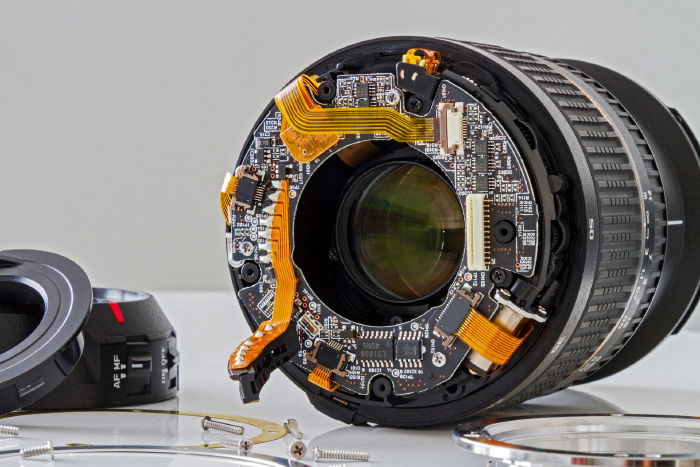An aspherical lens might be the answer to improving image quality. But one question—do your photos look soft toward the edges? If so, your lens might suffer from spherical aberration.
The solution is simple. Use an aspherical lens.
What Is the Difference Between a Spherical and an Aspherical Lens?
The surface of spherical lenses looks like it’s part of a sphere or cylinder.
The curve is the same across its entire surface. If you drew a line that follows the curve, it would form a circle. Because the design is simple, spherical lens designs are usually cheaper to produce.
The surface of an aspherical lens can never be part of a sphere or cylinder. The curve changes in certain parts of the lens surface to focus the light better. This change in the surface corrects all kinds of aberrations.
You should use an aspherical lens if you want to reduce spherical aberration in your images.
What Is Spherical Aberration?
Spherical aberration happens when light going through the camera lens focuses on different points. The light that hits the sides of a spherical lens focuses in front or behind the ideal focal point. This creates several focal points and causes spherical aberration.
It’s easy to recognize. The edges of your photos look soft and fuzzy at low f-numbers. That’s usually a sign of spherical aberration. When stopping down, the fuzziness should decrease or even disappear.
Camera lens manufacturers can solve the problem by adding more spherical lens elements. Another solution is to use aspherical lenses. Using aspherical glass lenses is more expensive.
What Are the Benefits of an Aspheric Lens?
There is a problem when using several spherical lenses to correct spherical aberration. It reduces the contrast in a photo. It could also render colors differently. And you might notice more flare in your images.
Aspherical lenses produce more colorful photos with better contrast.

Common Spherical and Aspherical Lens Questions
What Does Aspherical Mean?
Aspherical means “not spherical.” Its surface does not look like a part of a sphere.
How Do You Know if a Lens Is Aspheric?
You can only check if a camera lens is aspheric by looking at the individual lens elements. Usually, an aspherical lens has spherical and aspherical glass elements.
Are Aspheric Lenses Expensive?
Yes, these camera lenses are more expensive lens designs than spherical lenses. But technology has improved. And you can get an aspherical glass for a reasonable price. If you find a cheap aspherical lens, that usually means it’s made out of plastic. And you should avoid those.
Conclusion
Spherical aberration isn’t always a problem. When shooting portraits wide open, you won’t even notice it.
But when you need crisp and sharp photos, using aspherical lenses is the solution.
Aspherical lenses are more expensive than spherical lenses. But a high-quality lens will last a lifetime, so it’s worth the investment.
Check out our Effortless Editing with Lightroom course to create magazine-quality images!
